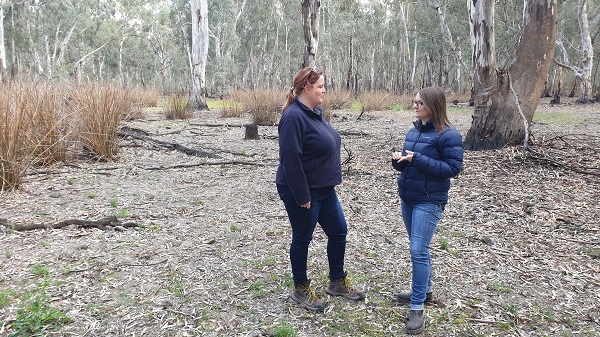At the Victorian Environmental Water Holder (VEWH) headquarters the team are busily putting together the seasonal watering plan for the 2020-21 watering year.
The seasonal watering plan is a statewide plan that guides environmental watering decisions in Victoria. It provides program partners, stakeholders and communities with a sense of what to expect from environmental watering during the watering year.
Environmental watering priorities and water availability may differ depending on seasonal conditions.
“Planning considers likely water availability and environmental watering requirements under various climate scenarios ranging from drought to very wet,” VEWH Executive Manager Planning and Delivery, Andrew Sharpe, said.
“Looking at our water availability under different climatic scenarios enables us to consider the range of potential seasonal conditions and how our environmental watering priorities may change if different scenarios unfold.”
Developing the plan is a huge task that is coordinated across multiple organisations. The seasonal watering proposals that catchment management authorities (CMA) and Melbourne Water provide are the critical foundations to the Seasonal Watering Plan. Catchment management authorities and Melbourne water also lead the local engagement activities that influence seasonal watering proposals and the seasonal watering plan. They engage with Traditional Owners, scientists, irrigators, farmers, recreational groups, local businesses and members of the community to capture their knowledge and understanding of their local waterways and how management of water for the environment could be enhanced.
Over the last few months the VEWH staff have been heading out to CMAs and Melbourne Water to:
- discuss how information should be included in the seasonal watering proposals and key sections that will influence the seasonal watering plan
- identify potential risks that might come up throughout the watering year when making deliveries and work through mitigations strategies
- visit water for the environment sites to discuss current monitoring, wetting and drying regimes and potential flow deliveries
- attend environmental water advisory group (EWAG) meetings alongside CMA representatives to engage with community members
“I really enjoy heading out to different parts of the state and working with our program partners during the development of the plan,” VEWH Environmental Water Coordinator, Kathryn Walker, said.
“We discuss some of the challenges we might face in the upcoming watering year, hear the perspectives of local community members and interest groups, talk through some of the watering deliveries we might undertake, review what has worked well and consider what could work better for the various sites in the environmental watering program.”
“Having those face to face conversations is really important and helps ensure that we are getting the information required from our program partners, stakeholders and communities to make informed decisions when delivering water for the environment.”
Over the next few weeks the team will be busy writing, drafting and reviewing various sections of the plan to get it ready for release by 30 June.

Erin Round (VEWH) and Genevieve Smith (North Central CMA) on a site visit to Guttrum Forest, by North Central CMA.